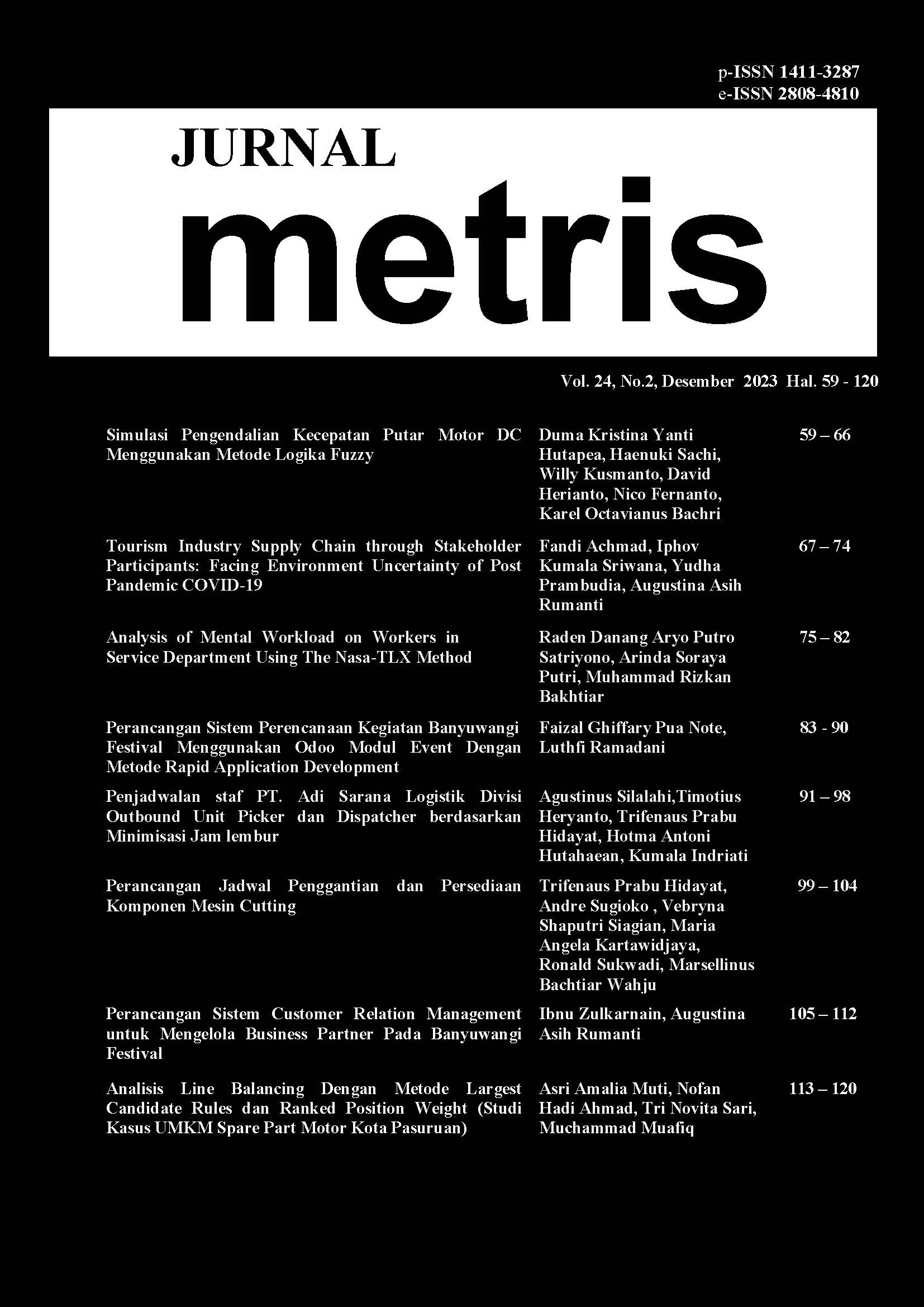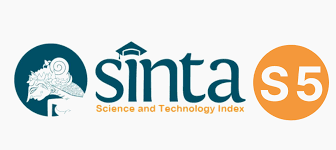Simulasi Pengendalian Kecepatan Putar Motor DC Menggunakan Metode Logika Fuzzy
DOI:
https://doi.org/10.25170/metris.v24i02.4725Keywords:
Kecepatan Putar, Motor DC, Fuzzy Logic, Mamdani, Sensor Ultrasonik, PWMAbstract
This paper discusses DC motor rotational speed control using fuzzy logic method. The system works by utilizing ultrasonic sensors to detect distance. The detected distance affects the rotational speed of the DC motor which is controlled by the Arduino UNO microcontroller. Fuzzy logic is applied to the Arduino UNO microcontroller in which distance as the input, and the rotational speed of the DC motor in the form of Pulse Width Modulation as the output. There are several classifications of distance: very close, close, normal, far and very far. In addition, there are several classifications in the motor rotational speed response: slow, very slow, medium, fast, and very fast. The design of the fuzzy logic system is carried out in the Arduino IDE application and MATLAB using the Mamdani method at the inference stage. Fuzzy logic system is run on the Arduino UNO microcontroller in which the simulation is carried outthrough Proteus application. The test results show that the largest percentage of errors/discrepancies between the Proteus system design and the MATLAB is 1.55%. In the future, this simulation can be applied to systems such as self-driving cars.












